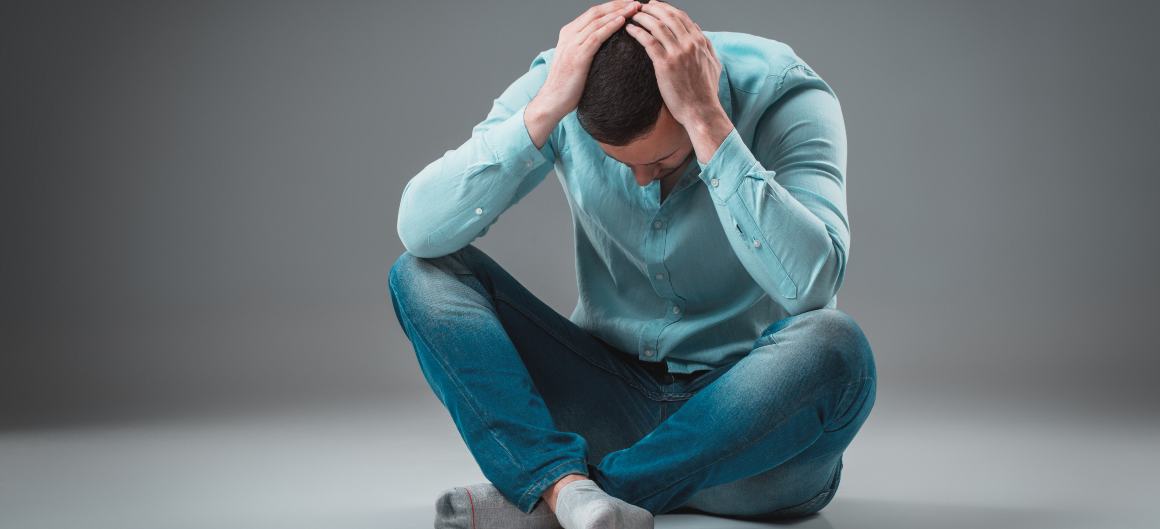What is the 3 3 3 rule for anxiety?
Published:
Anxiety is one of the most common mental health issues, affecting over 40 million adults in the United States alone. It can significantly impact daily functioning and quality of life. While there are many pharmaceutical and therapeutic approaches to managing anxiety, lifestyle changes like the 3 3 3 rule can also be helpful.
Contents:

What is Anxiety?
Anxiety refers to excessive worry or fear that is out of proportion to the situation. It is the most prevalent mental illness in the US, with over 19% of adults experiencing some type of anxiety disorder each year. The most common types of anxiety disorders include:
- Generalized Anxiety Disorder (GAD) - Excessive worry about everyday things
- Social Anxiety Disorder - Intense fear of social situations
- Panic Disorder - Recurrent panic attacks
- Phobia-Specific - Irrational fear of specific objects or situations
- Post-Traumatic Stress Disorder (PTSD) - Anxiety stemming from traumatic experiences
Anxiety can manifest both emotionally and physically. Common symptoms include feeling restless or on-edge, irritability, muscle tension, increased heart rate, sweating, difficulty concentrating, gastrointestinal issues, and sleep disturbances.
While anxiety can be debilitating, it is also highly treatable. Common treatments include psychotherapy, medications, relaxation techniques, exercise, and lifestyle changes. The 3 3 3 rule falls into the lifestyle change category as a simple tool to manage anxious thoughts and feelings.
What is the 3 3 3 Rule?
The 3 3 3 rule is a mindfulness technique used to ground yourself when feeling anxious. It engages three of your senses (sight, touch, and hearing) to bring yourself into the present moment. Here are the steps:
1. See 3 things
Look around you and become aware of three things that you can see. For example, you could choose 3 objects, like your computer, a painting on the wall, and a pen. State what they are, either aloud or silently to yourself. The act of verbalizing what you see helps reinforce your observation of the details.
2. Touch 3 things
Reach out and touch three textures around you. For instance, you could touch your sweater, the table surface, and a pillow. Again, say each one out loud as you touch it. Noticing textures helps engage your sense of touch to ground you.
3. Listen for 3 sounds
Tune into your sense of hearing by listening for three distinct sounds. They could be noises both close by and in the distance. You might hear birds chirping outside, the hum of the refrigerator, or a car passing by. State each sound out loud as you hear it.
The sequence of seeing, touching, and listening to your surroundings shifts your focus externally. It serves as a quick mindfulness exercise to bring you into the present when feeling overwhelmed by anxious thoughts.
How Does the 3 3 3 Rule Help Anxiety?
Using the 3 3 3 rule during moments of anxiety can provide immediate relief through several mechanisms:
Interrupts anxious thinking
Anxiety often manifests as recurring negative thoughts and worry about the future. By actively observing details in your environment using the 3 3 3 technique, it forces you to shift out of anxious thinking patterns. The sensory input competes with and interrupts the train of worried thoughts.
Activates a relaxation response
Focusing your awareness outward using multiple senses elicits the body's relaxation response. This counters the fight-or-flight response of anxiety. Concentrating on sensory details you observe in the present moment calms the nervous system.
Mindfulness grounding
Mindfulness involves non-judgmental awareness of the present. The 3 3 3 rule encourages mindful observation of your immediate surroundings, keeping you grounded in the here-and-now. This prevents anxious thoughts from spiraling as you anchor yourself to the present.
Distraction
The 3 3 3 technique provides distraction from anxious thoughts by refocusing your concentration externally. This diversion reduces the intensity of anxiety. It gives your mind a break from worrying and allows anxious feelings to subside.
Slow, rhythmic breathing
Guiding yourself through the sequence of seeing, touching, and listening tends to slow and deepen breathing. Rhythmic, abdominal breathing counters hyperventilation that often occurs with anxiety. Deep breathing also activates the parasympathetic nervous system to calm the body.
When to Use the 3 3 3 Technique
The 3 3 3 rule can be used whenever you notice anxiety building. It is especially helpful in moments when anxiety feels overwhelming or you get caught up in worrisome thoughts. Situations where the 3 3 3 technique may be useful include:
- At the onset of a panic attack
- When feeling anxious before an event
- During periods of high stress
- To manage anxiety before a feared situation
- To reduce generalized feelings of worry
- To fall asleep if anxious thoughts are keeping you up
- To cope with anxiety related to specific phobias or PTSD
It can be helpful to start using the 3 3 3 rule early and intermittently as soon as you notice anxiety symptoms arising. This prevents anxious thoughts from escalating into a panic attack or highly distressed state. However, the technique can still help de-escalate anxiety in the midst of a panic attack as well.
Tips for Using the 3 3 3 Technique
Here are some additional pointers to get the most out of using the 3 3 3 rule for anxiety:
- Speak each observation aloud or out loud to yourself. Verbalizing helps keep you grounded.
- Choose objects/textures/sounds both near and far. This encourages you to expand your observational awareness.
- Notice details like colors, shapes, and textures. Describing what you see engages different parts of your brain.
- Move slowly through the sequence, allowing enough time to notice each sensation. Don't rush.
- Repeat the cycle multiple times until you feel calmer.
- Try doing the exercise outdoors in nature to gain additional benefits.
- Focus on observing and avoiding judgment or analysis of the items.
- Practice while calm to get comfortable using it anywhere.
- Carry a few textured items (stone, fabric) to use anywhere.
- Pair with deep, slow breathing exercises after observing each sense.
Does the 3 3 3 Rule Work?
Research and anecdotal evidence indicate the 3 3 3 technique can be effective for reducing anxiety. Studies on mindfulness-based approaches show they meaningfully lower stress and anxiety levels. By prompting present-moment focus, the 3 3 3 rule creates a brief mindfulness exercise to divert anxious thoughts.
Using the senses to shift attention externally also distracts from worry and elicits relaxation responses. This loosens anxiety's grip and brings cognitive, emotional, and physical relief. The 3 3 3 technique has proven popular because it is discreet, easy to remember, and convenient to use anytime, anywhere. It also helps build long-term resilience as a coping tool for anxiety management.
While the 3 3 3 rule can rapidly calm anxious feelings, it is not designed as a standalone treatment for chronic or severe anxiety. It is an evidence-based complementary tool that may provide short-term relief as part of an overall treatment plan. Individuals with anxiety disorders should also seek medical advice regarding therapy and medication options tailored to their needs.
Combining 3 3 3 with Other Techniques
For maximum benefit, experts recommend combining the 3 3 3 exercise with additional relaxation techniques to manage anxiety episodes. Here are some complementary practices:
Deep breathing
After each set of observations, take 5-10 slow, controlled breaths. Inhale deeply, feeling your belly expand. Exhale fully, releasing tension. Deep breathing counteracts hyperventilation and activates the parasympathetic nervous system.
Progressive muscle relaxation
Tense and relax different muscle groups in sequence from head to toe. This helps release physical tension caused by anxiety. You can do this for a few minutes after completing the 3 3 3 sequence.
Guided imagery
Picture a peaceful scene like a beach. Focus on imagining sensory details like the sound of waves and warmth of sand under your feet. Visualization helps calm the mind.
Exercise
Going for a brisk walk or doing yoga can help reduce anxiety. Aerobic exercise and movement therapies like tai chi provide additional relaxation benefits.
Meditation
Regular meditation practice helps build resilience and calm the mind long-term. You can meditate for a few minutes after using the 3 3 3 rule to extend tranquility. Apps provide guided meditations.
Building a repertoire of tools allows you to target anxiety from multiple angles. The 3 3 3 technique can center yourself in the moment so you can implement other calming practices.
Limitations of the 3 3 3 Rule
While the 3 3 3 rule is generally safe, free, and easy to implement, there are some limitations to consider:
- It is meant for short-term relief only, not as an ongoing solution. Other interventions are likely needed for chronic anxiety.
- The technique may not work well during full-blown panic attacks or high anxiety. Modifications like slowing down the sequence could help in those cases.
- Some situations prevent using it fully, like having impaired vision or hearing. Adapting it by using two senses could help.
- For individuals with sensory sensitivity, touching textures may feel too stimulating. Sticking to visual and auditory input may be better.
- It requires awareness and focus to implement, which can be difficult when anxiety is very severe.
- Safety behaviors like avoidance or compulsions are not addressed by using the 3 3 3 rule alone.
- For some, it provides only transient relief. Additional techniques would be beneficial.
- Anxiety has many causes, so lifestyle tools like 3 3 3 will not help every individual.
While generally safe when used as directed, speak to a doctor if you have concerns using mindfulness or grounding techniques for anxiety.
Frequently Asked Questions
Where did the 3 3 3 rule originate?
The 3 3 3 rule was initially conceptualized as a grounding exercise by mental health clinicians. It became popular within dialects of cognitive behavioral therapy (CBT) for emotional regulation skills. The exact origin is unknown, but it has been shared as an anxiety self-help tip for many years.
Can I do 3 3 3 silently or do I have to speak aloud?
You can state each observation silently or aloud. Saying them aloud can help keep you focused in the present moment, but simply acknowledging them internally can also be effective. Choose whichever feels most comfortable for you in the situation.
How is 3 3 3 different from 5 4 3 2 1 grounding?
The 5 4 3 2 1 grounding technique also uses sensory input to reduce anxiety. The main difference is it engages all five senses by listing 5 things you see, 4 you feel, 3 you hear, 2 you smell, and 1 you taste. The 3 3 3 rule simplifies this into three senses. Both can be effective depending on your needs.
Can I use 3 3 3 for other conditions like depression?
While designed for anxiety, the mindfulness and distraction benefits of 3 3 3 may also help with depressed moods or even obsessive thinking. It can be worth trying if you experience any type of distressing or overwhelming thoughts.
Does the order of senses matter for 3 3 3?
You can experiment with the order, but starting by seeing things typically helps orient you first before moving into touch and sound. Ending with listening cues also tends to sustain focus outwards. Find whatever sequence works best for your needs.
Conclusion
The 3 3 3 rule is an accessible mindfulness-based exercise that leverages sensory awareness to manage anxiety. By focusing your eyes, hands, and ears sequentially on details in your environment, it shifts your attention outward, grounds you in the present, and reduces worry. Using the technique helps counter anxious thoughts, elicits relaxation responses, and provides temporary relief during distressing episodes. While not a standalone cure, the 3 3 3 rule can be a fast and effective strategy to include in an anxiety management toolbox. Remember to also seek professional support and consider complementary stress reduction practices like deep breathing, exercise, meditation, and therapy. With some diligent practice, the 3 3 3 rule can help provide calm at the onset of anxiety.
Resources used to write this article
Anxiety and Depression Association of America. (2018). Facts & statistics. https://adaa.org/about-adaa/press-room/facts-statistics
Harrington, N., & Pickles, C. (2009). Mindfulness and cognitive behavioral therapy: A commentary. Journal of Cognitive Psychotherapy, 23(2), 92-94. https://doi.org/10.1891/0889-8391.23.2.92
Jerath, R., Crawford, M. W., Barnes, V. A., & Harden, K. (2015). Self-regulation of breathing as a primary treatment for anxiety. Applied psychophysiology and biofeedback, 40(2), 107–115. https://doi.org/10.1007/s10484-015-9276-8
Kiryakova, G., Nenkov, G., & Yordanova, S. (2021). Mindfulness techniques - effective tools against increased anxiety during COVID-19 pandemic. SN Comprehensive Clinical Medicine, 3, 290–294. https://doi.org/10.1007/s42399-020-00618-6
McIndoo, C. C., File, A. A., Preddy, T., Clark, C. G., & Hopko, D. R. (2016). Mindfulness-based therapy and behavioral activation: A randomized controlled trial with depressed college students. Behaviour research and therapy, 77, 118–128. https://doi.org/10.1016/j.brat.2015.12.012
Sucala, M., Schnur, J. B., Constantino, M. J., Miller, S. J., Brackman, E. H., & Montgomery, G. H. (2012). The therapeutic relationship in e-therapy for mental health: a systematic review. Journal of medical Internet research, 14(4), e110. https://doi.org/10.2196/jmir.2084
Torous, J., & Hsin, H. (2018). Empowering the digital therapeutic relationship: virtual clinics for digital health interventions. NPJ digital medicine, 1, 16. https://doi.org/10.1038/s41746-018-0028-1














